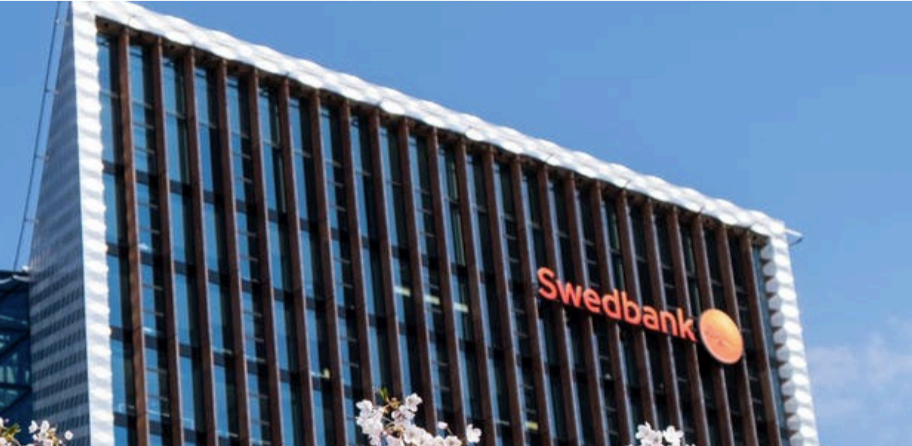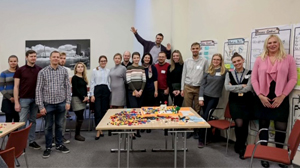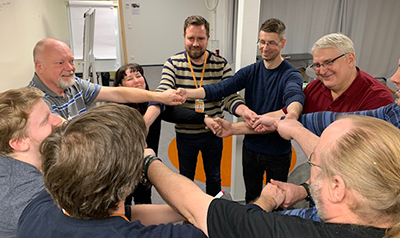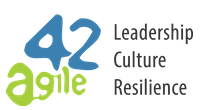
Swedbank: Building agility in a large international bank, while making employees happier.
 Swedbank was founded in 1820 and today has almost 8 Million private customers. During 2018-2019, agile42 has supported Swedbank IT Delivery in Sweden and the Baltics throughout their agile transition: a very interesting and fun project mainly because of the incredibly open and collaborative human beings the coaches have met throughout the journey and the ex- traordinarily committed leaders we had the pleasure to support. We at agile42 are very proud of what Swedbank has been doing and has achieved.
Swedbank was founded in 1820 and today has almost 8 Million private customers. During 2018-2019, agile42 has supported Swedbank IT Delivery in Sweden and the Baltics throughout their agile transition: a very interesting and fun project mainly because of the incredibly open and collaborative human beings the coaches have met throughout the journey and the ex- traordinarily committed leaders we had the pleasure to support. We at agile42 are very proud of what Swedbank has been doing and has achieved.
The core of this transitional journey was the leadership understanding of the need of a cultural shift, in order to move from a heavily control-based to a more collaborative organisation: adopting Scrum becomes just gold plating existing process and roles, if the DNA of the organization and the leadership behaviours stay unchanged.
At agile42 we believe in creating more human and productive workplaces, which in turn create resilient organizations which are able to respond fast to changing market conditions and that’s what Swedbank IT tried to do. This is their story.
Challenges
No real change will happen without any challenges or hiccups. That was true also for Swedbank. If the change is to be successful and sustainable, it must grow organically within the organization. A true agile transition can be effective only if we are able to create a proper mindset in the organization. Other important factors are related to the Organization and Structure, Products and Technology, People and Skills, Vision and Strategy. It is a complex journey, and this is why you cannot buy or rent organizational agility: you need to own it.
The journey for IT and our division has taken a couple of years now and I think that we need at least 1 more year to consolidate what we learned so far. I feel that this transition has been fast, at least for us, also thanks to the guidance from agile42. When- ever you do a change in an organization of this size, you have to keep in mind that the maintenance and security is always a top priority and we have a great responsibility towards our Swedbank customers. Being an infrastructure and operations-based organization, this has been challenging.
The agile practices are in some cases more applicable to development, and this has challenged us to think more outside of the box. The upside of this transition is that we have upfront recognised that we needed to be an adaptive organization despite of our “old” organization legacy.
Every company has a strategic advantage in being different and improving the overall organizational agility is a continuous journey: you cannot buy a predefined process and expect this to support your strategy and retain your competitive edge. Every organization that is interested in becoming sustainably agile needs to make this journey and we helped Swedbank travel quickly with a minimum of detours and learn the craft as we together went the distance. An important success factor was, as always, adopting an iterative and incremental approach to change: the aim is to achieve valuable and visible changes as fast as possible, while preparing the wider organization for the upcoming change.
The first step was to perform an in-depth assessment of the situation to identify the current environment, the organizational culture, potential risks and sensitive areas, and to understand the goal of the transition. The management team is responsible for an organization to reach business goals and become resilient towards competition, market changes or other impact: therefore understand- ing the impact of agility, creating the right agile organizational structure, establishing the proper leadership styles and preparing the environment were some of the strategic work the leadership had to address before any operational activity towards agility.
Then we introduced the necessary practices and helped both the management and the teams understand the principles behind the practices. Depending on the needs, we worked with leaders to identify the methods and frameworks that could lead them towards the goals they wanted to achieve.
We trained and supported the teams in the use of Scrum, Kanban or any other suitable framework, and, most importantly, we aimed at teaching everyone how to continue the journey on their own. We have all experienced that pushing people to change does not work, so we rather focused on making people the best they could do and trusted they would do a good job.
And they did!
What changed?
Before we took on this transition we were, like many others, working in a waterfall process.
Conclusion
In the beginning it was difficult to see if the delivery of our services had improved or not, but now, we are confident that we are faster and more flow efficient than before the transition started. However, the greatest achievement of this transformation is the creation of collaborative culture within the whole bank.
Results
 Clearer overview to present to our stakeholders.
Clearer overview to present to our stakeholders.- Company culture more open to changes and improvements.
- 10 times higher employee engagement.
- Customer focused organizational structure.
- Faster service delivery.
